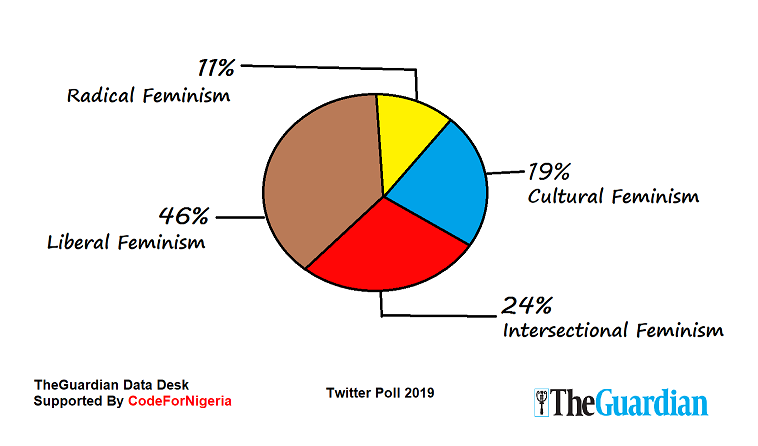Feminism is one of the most popular words of the 21st century. Social media movements and watershed political events have cast a cross-industry spotlight on the term. And while it’s used everywhere from presidential debates to primary school classrooms, few seem to understand what it means.
Feminism to some means angry women, to others common sense and to the neutral minority means “a very long argument.” The ideology behind feminism is simple but its practices and subsets are complex and this often results in confusion, as warring factions within feminism and anti feminist critics are constantly changing and challenging the conversation around it’s definition. In an era of political correctness where words are constantly being reclaimed, redefined and cancelled, what does feminism really mean?
Feminism, in its simplest terms, is defined as a range of political movements, ideologies, and social movements that share a common goal: to define, establish, and achieve the political, economic, personal, and social equality of the genders.This includes fighting gender stereotypes and seeking to establish educational and professional opportunities for women that are equal to those for men. It seems simple on the surface. But feminism is also divided into different categories and varies based on race, era, country and religion.
Most of feminism’s convolutions lie in it’s age. Feminism’s earliest roots span back to 1837. Charles Fourier, a French philosopher, used the term to describe the emancipation of women and assertion of women’s rights in his theorized utopia.The word was first recorded in English by a report on female suffragettes in a business magazine from the American south circa 1852. The article, De Bow’s Review of the Southern and Western States, discloses:
“The reforming ladies have not yet got an “ism” for their move; but have nevertheless come forward scarcely less boldly than their masculine condjutors… Our attention has happened to fall upon Mrs. E. O. Smith, who is, we are informed, among the most moderate of the feminist reformers! Tolerably fair specimens of the other extreme have been made public in the sundry women-convention reports which have appeared…”
But the word feminism would not gain traction until the 1910s. The First World War Era saw what sociologists call First Wave Feminism, where the movement was slowly popularized in Britain and America, but did not amass the global following it currently has. First Wave Feminists spent most of their time fighting for voting rights and doing what we do now: defining feminism. An article from The Robesonian in 1914 reads:
“We are asked, what is feminism? We supposed it is a new term to describe the womanly woman as a distinguished from effeminacy. It is rather a term that embodies woman’s rights.”
English actress and suffragist Beatrice Forbes-Robertson Hale stated in 1917: “The three cardinal principles in the movement are: The development of the highest type of monogamy; the recognition of the single standard of morals and the consecration of the best thought of parents to the interests of their children.” This is a definition that would baffle anyone in our current social climate, feminist or otherwise.
In 1915, The Washington Herald finally put an end to the mass confusion with a series on interviews asking women what it meant. The agreed definition is what we have now: “Feminism is the doctrine of the social, legal, and political equality of the sexes.”

The Second Wave of Feminism in the 1950s-80s focused on sexuality and women’s reproductive rights. Conversations around equal pay, maternity leave and access to contraceptives took the forefront resulting in the publication of Simone De Beauvoir’s magnum opus The Second Sex. Her argument that “one is not born but becomes a woman” is one that’s still thrown around by lawmakers and has set the tone for our conversations around gender today
The Third Wave of feminism, which began in 1990 and has continued into our generation has been prolific. With social media interconnecting millions of people it’s gained widespread publicity with movements such as #WomenNotGirls and #ArewaMeToo branching off of it. With its global platform third wave feminism focuses on dismantling the gender binary and inclusivity. But with such extensive appeal covering different backgrounds on a global scale would be impossible. With no one woman’s experience being identical, feminism has broken down into subsectors. The most popular are intersectional, black, white, womanism, lipstick and cultural feminism.
Intersectional Feminism: Coined by Kimberle Crenshaw, this is a branch of feminism which identifies how different aspects of social and political discrimination overlap with gender. It argues that sexism doesn’t affect women of separate backgrounds in the same way. She describes it as being in an intersection:
“Consider…an intersection, coming and going in all four directions. Discrimination, like traffic through an intersection, may flow in one direction, and it may flow in another. If an accident happens in an intersection, it can be caused by cars traveling from any number of directions and, sometimes, from all of them. Similarly, if a Black woman is harmed because she is in an intersection, her injury could result from sex discrimination or race discrimination. . . .But it is not always easy to reconstruct an accident: Sometimes the skid marks and the injuries simply indicate that they occurred simultaneously, frustrating efforts to determine which driver caused the harm.”
The popularization of intersectional feminism lead to the formations of Black feminism, which focuses on black women’s issues. It’s separation lead to the formation of White feminism, which is seen to focus on white women’s issues and deliberately exclude issues faced by women from different racial backgrounds. A popular example is the wage gap. Whilst most white American feminists seem to focus on the gap between men and women, every woman earns 70 cents to a man’s dollar, they ignore underlying racial disparities. Black women make 63 cents, Native American women make 57 cents, and Latina women make 54 cents.
Womanism, coined by Alice Walker in her novel Coming Apart, supports the belief that both femininity and culture are equally important to the woman’s existence. The culture of the woman, which in this case is the focal point of intersection instead of class or some other characteristic, in womanism is not an element of her femininity, but rather is the lens through which femininity exists eg. a woman’s Blackness is not a component of her feminism; instead, her Blackness is the lens through which she understands her femininity. It’s African specific twin Africana Womanism, Nigerian literary critic Chikwenye Okonjo Ogunyemi, argues, is a better alternative to western feminism in Nigeria on the belief that western feminism won’t acknowledge African cultural norms and differences.
Cultural Feminism is the view that there is a “female nature” or “female essence” or related attempts to revalidate attributes ascribed to femaleness. It’s ideologies are similar to feminism but argue that women, while wholly deserving of rights, are fundamentally different to men.0
With all of these changing subdivisions and with feminism in our generation according to some sociologists beginning to bud into a fourth wave, how can feminism still be defined singularly?
The answer’s simple: feminism focuses on the equality of the sexes. As long as that goal is maintained the methods to achieving it can vary wildly. It’s a race to the finish with no rules. This spreads to the definition of feminist as well. As long as you believe in the equality of the sexes, believe women’s rights to be equally as powerful, happy, sad, lost, creative, individualistic and human as men you are a feminist. And you might not even know it.






